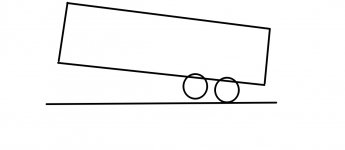BigGuy82
Well-known member
And you didn't earn anywhere near what you earn now. I think mine was about $3.99
It's OK - call me lazy, but pulling off four heavy a-- wheels, properly cleaning the old bearings with solvent, re packing with grease, remounting the heavy a-- wheels and cleaning up isn't my idea of a fun time. Roll it into a dealer and for a couple hundred bucks they'll do the job right, check everything else out and have you on your way. And, I used to be a mechanic.
However, if you enjoy this stuff, a bearing packer is a cheap way to get it right. I'll fix anything else on this coach, but messing with the very heavy suspension system is something I really like to avoid. To each their own ...







